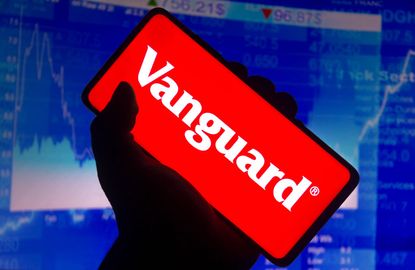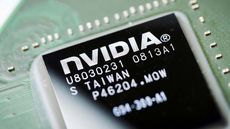Vanguard's Primecap Mutual Funds Reopen to Investors: What to Know
In June, Vanguard fully reopened Vanguard Primecap and Vanguard Primecap Core.

For the first time in at least 15 years, new investors can buy shares in two of Vanguard’s best-regarded actively managed mutual funds. In June, Vanguard fully reopened Vanguard Primecap (VPMCX) and Vanguard Primecap Core (VPCCX). Both funds are run by Primecap Management, described by Jeff DeMaso, editor of The Independent Vanguard Adviser newsletter, as, “arguably, one of the best active managers out there.”
Vanguard locked new investors out of Primecap in 2004 and out of Core in 2009, limiting existing investors to adding no more than $25,000 a year. The funds’ strong performances had attracted more money than the managers felt they could put to work in the long-term, value-priced growth opportunities they seek.
But in recent years, performance — especially at Primecap — has been lumpy. Investors have withdrawn more than $38 billion from Primecap since 2019 (leaving it with assets of $76.1 billion), and nearly $5 billion from Core (now with $13.2 billion). And, says Ryan Barksdale, who oversees Vanguard’s active stock funds, “the market has evolved,” creating new investment opportunities for additional cash. Both funds require a minimum initial investment of $3,000 for investor-class shares.

Sign up for Kiplinger’s Free E-Newsletters
Profit and prosper with the best of expert advice on investing, taxes, retirement, personal finance and more - straight to your e-mail.
Profit and prosper with the best of expert advice - straight to your e-mail.
The two funds hold many of the same stocks. Both are tilted toward health care and industrial firms, and have benefited from a boom in Eli Lilly, which makes up more than 10% of each portfolio. Lilly has returned 94% over the past 12 months.
Although it can invest in stocks of any size, Primecap is currently weighted slightly more toward large companies. Charging an expense ratio of 0.38%, it has returned 27.5% over the past 12 months, beating the 24.6% return of the S&P 500. The fund gained 15.5% annualized over the past 15 years, compared with 14.8% for the S&P 500. Core, with expenses of 0.46%, has returned 25.4% over the past year; 14.7% over the past 15 years.
Note: This item first appeared in Kiplinger Personal Finance Magazine, a monthly, trustworthy source of advice and guidance. Subscribe to help you make more money and keep more of the money you make here.
Related Content
Get Kiplinger Today newsletter — free
Profit and prosper with the best of Kiplinger's advice on investing, taxes, retirement, personal finance and much more. Delivered daily. Enter your email in the box and click Sign Me Up.

Kim Clark is a veteran financial journalist who has worked at Fortune, U.S News & World Report and Money magazines. She was part of a team that won a Gerald Loeb award for coverage of elder finances, and she won the Education Writers Association's top magazine investigative prize for exposing insurance agents who used false claims about college financial aid to sell policies. As a Kiplinger Fellow at Ohio State University, she studied delivery of digital news and information. Most recently, she worked as a deputy director of the Education Writers Association, leading the training of higher education journalists around the country. She is also a prize-winning gardener, and in her spare time, picks up litter.
-
 Stock Market Today: Dow Climbs 288 Points After Amazon, Intel Earnings
Stock Market Today: Dow Climbs 288 Points After Amazon, Intel EarningsPost-earnings strength from Amazon and Intel helped cushion the blow of a disappointing October jobs report.
By David Dittman Published
-
 Nvidia Stock Is Joining the Dow. Is It Time to Buy?
Nvidia Stock Is Joining the Dow. Is It Time to Buy?Nvidia will replace Intel in the Dow Jones Industrial Average this Friday. What does it mean for the stock?
By Dan Burrows Published
-
 Stock Market Today: Stocks Slip Ahead of Election Day, Fed Decision
Stock Market Today: Stocks Slip Ahead of Election Day, Fed DecisionPost-earnings strength from Amazon and Intel helped cushion the blow of a disappointing October jobs report.
By David Dittman Published
-
 Nvidia Stock Is Joining the Dow. Is It Time to Buy?
Nvidia Stock Is Joining the Dow. Is It Time to Buy?Nvidia will replace Intel in the Dow Jones Industrial Average this Friday. What does it mean for the stock?
By Dan Burrows Published
-
 Tesla Stock Extends Losing Streak Ahead of Election Day
Tesla Stock Extends Losing Streak Ahead of Election DayTesla stock is headed toward its sixth straight loss Monday and Wall Street is staying on the sidelines. Here's why.
By Joey Solitro Published
-
 Why Constellation Energy Stock Is Sliding After an Earnings Beat
Why Constellation Energy Stock Is Sliding After an Earnings BeatConstellation Energy stock is lower Monday as a regulatory decision offsets the utility company's solid third-quarter earnings results.
By Joey Solitro Published
-
 Viking Therapeutics Stock Swings Wildly After Weight-Loss Drug Data
Viking Therapeutics Stock Swings Wildly After Weight-Loss Drug DataViking Therapeutics stock is volatile Monday after the pharma company released positive data for its weight-loss drug. Here's what you need to know.
By Joey Solitro Published
-
 How to Sell Your Business With No Regrets
How to Sell Your Business With No RegretsThe key to a successful exit: You've got to be prepared. So, start now by maximizing profitability, planning for succession and avoiding the dreaded five D's.
By Nick Guida, Investment Adviser Representative Published
-
 The Bare Necessities of Buying Pet Insurance
The Bare Necessities of Buying Pet InsurancePet insurance can help put you at ease over the health of your furry friends. Here's what to look for when shopping around for a policy.
By Joelle Spear, CFP® Published
-
 Should You Buy These Covered-Call Funds?
Should You Buy These Covered-Call Funds?Covered-call ETFs are popular but come with plenty of caveats.
By Andrew Tanzer Published